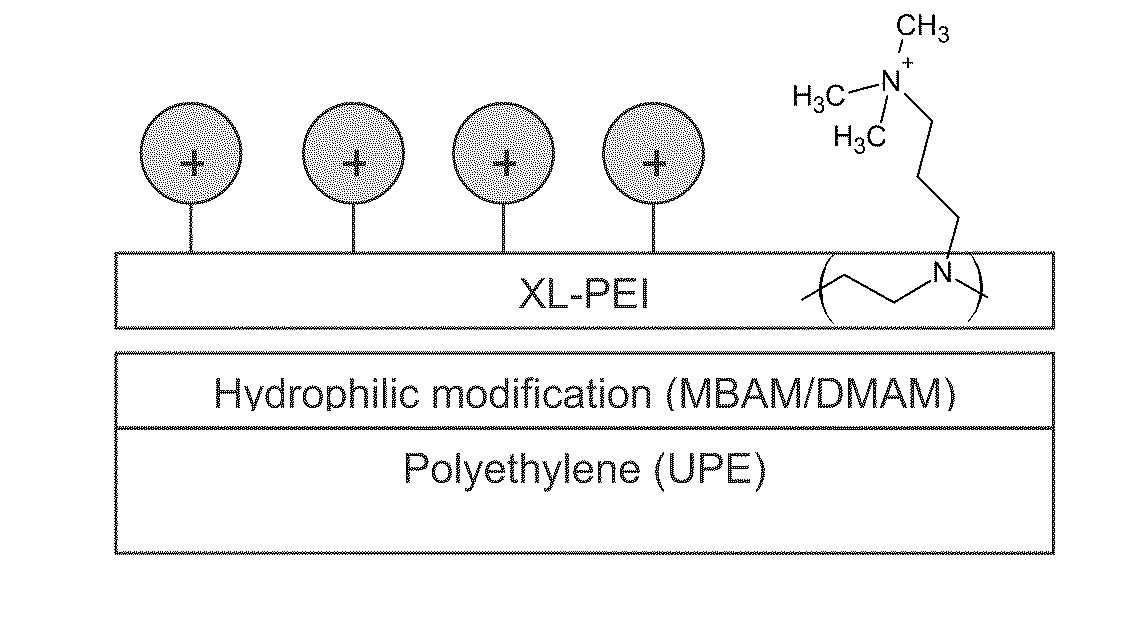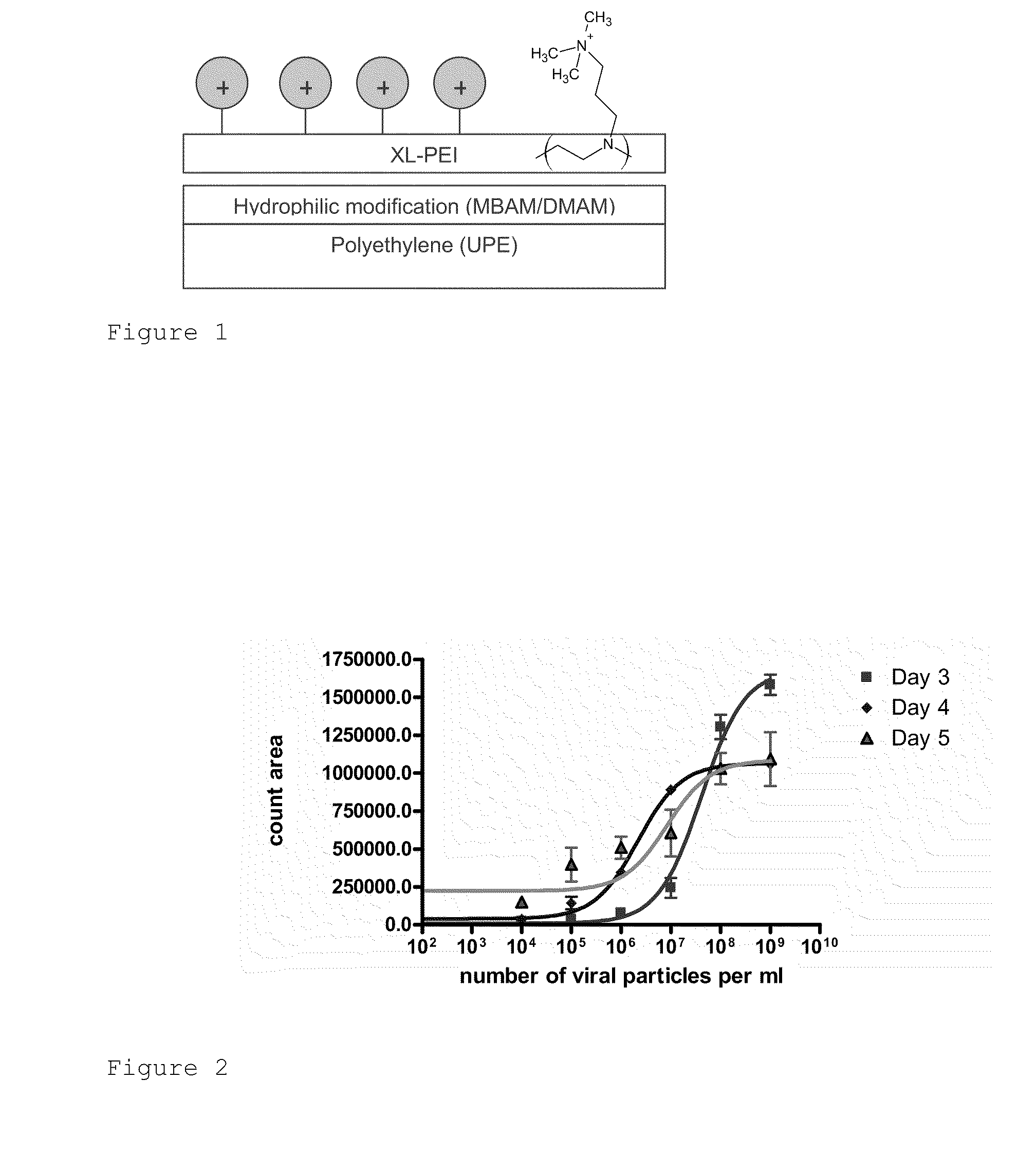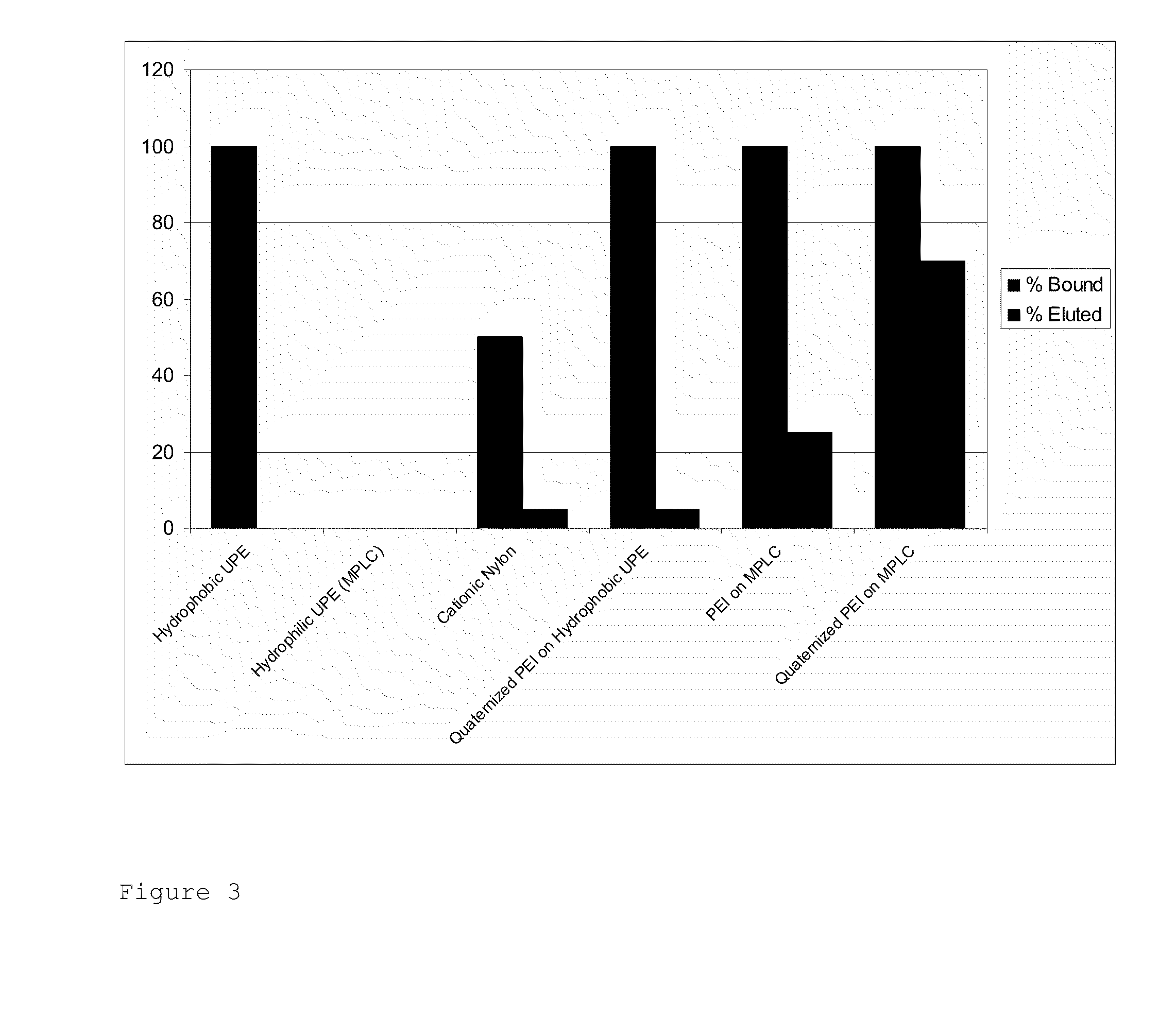Media For Membrane Ion Exchange Chromatography
a membrane ion exchange and media technology, applied in the field of bioseparation, can solve the problems of large volume columns, capacity and usage limitations of bead chromatography, and no longer economical purification methods, and achieve the effects of facilitating elution, reducing the number of chromatography columns, and reducing the cost of chromatography
- Summary
- Abstract
- Description
- Claims
- Application Information
AI Technical Summary
Benefits of technology
Problems solved by technology
Method used
Image
Examples
example 1
[0036]A 6×6″ sheet of hydrophilized polyethylene membrane with pore size rating 0.65 um was coated with aqueous solution containing 7 wt. % of polyethyleneimine (Sigma-Aldrich), 0.35% of polyethylene glycol diglycidyl ether (Sigma-Aldrich), and 0.03M of sodium hydroxide. Excess of solution was nipped off and the membrane was allowed to dry overnight. It is subsequently rinsed with water and submerged in 100 mL of 50 wt % solution of 3-bromopropyltrimethylammonium bromide (BPTMAB) and 0.1M sodium hydroxide. The membrane was left in this solution for 48 hrs, and concentrated NaOH was periodically added to maintain pH at 13. The membrane was then removed from solution, rinsed with water, and dried.
example 2
[0037]Membrane prepared in Example 1 was used for adenovirus purification. Adenovirus was first extracted from the infected cells by multiple cycles of freezing and thawing. The cellular debris was removed by centrifugation leaving the viable virus particles in the supernatant. Supernatant was treated with Benzonase. The supernatant was further clarified by passing it through a microporous 0.2 um membrane filter. The solution was diluted with the equilibration buffer, pH 8.0, NaCl concentration 100 mM. The same buffer was used for conditioning the purification membrane. Virus solution was slowly passed through the membrane that adsorbs the virus particles, allowing much of the cellular debris to pass through the filter. The membrane was then washed with a wash buffer, pH 8.0, NaCl concentration 200-250 mM, to remove any weakly bound debris. Finally, the virus was eluted off the membrane with an elution buffer. pH 8.0, NaCl concentration 1000 mM.
[0038]Virus concentration was assessed...
example 4
[0040]Membranes were prepared according to Example 1 using variable concentration of BPTMAB in the reaction mixture, which produced different degrees of modification. FIG. 5 shows that the degree of PEI modification with BPTMAB has a direct impact on the percentage of eluted virus.
PUM
| Property | Measurement | Unit |
|---|---|---|
| heights | aaaaa | aaaaa |
| lengths | aaaaa | aaaaa |
| thicknesses | aaaaa | aaaaa |
Abstract
Description
Claims
Application Information
 Login to View More
Login to View More - R&D
- Intellectual Property
- Life Sciences
- Materials
- Tech Scout
- Unparalleled Data Quality
- Higher Quality Content
- 60% Fewer Hallucinations
Browse by: Latest US Patents, China's latest patents, Technical Efficacy Thesaurus, Application Domain, Technology Topic, Popular Technical Reports.
© 2025 PatSnap. All rights reserved.Legal|Privacy policy|Modern Slavery Act Transparency Statement|Sitemap|About US| Contact US: help@patsnap.com



